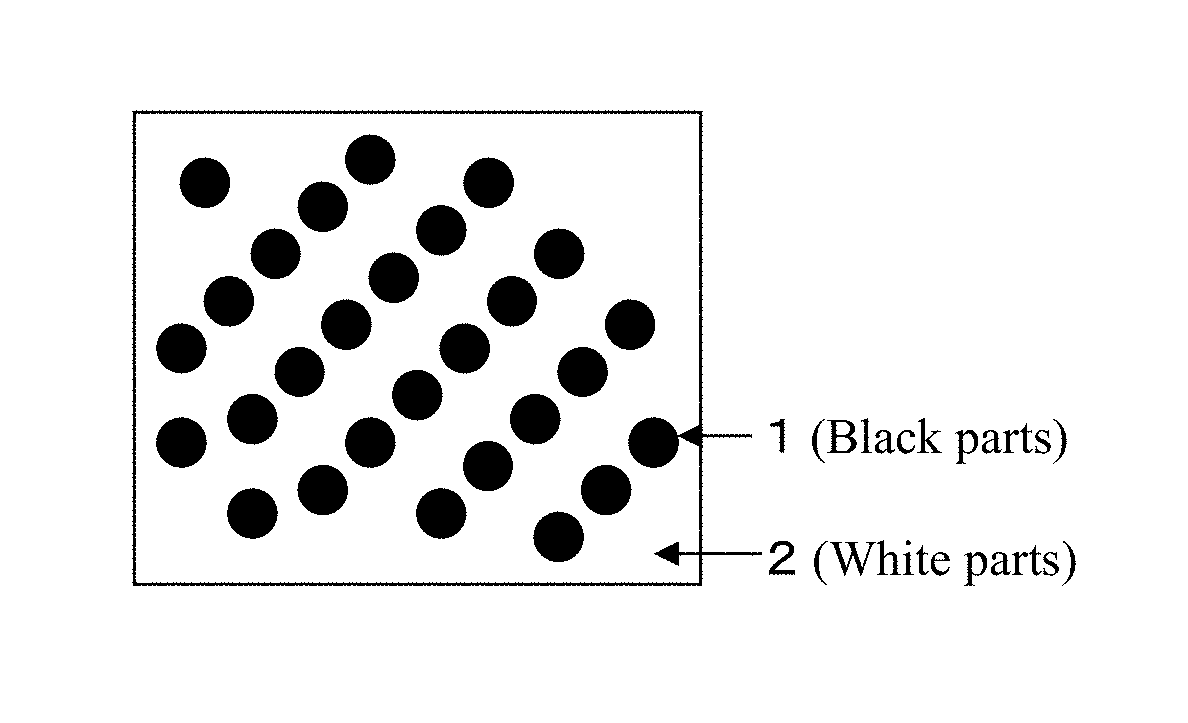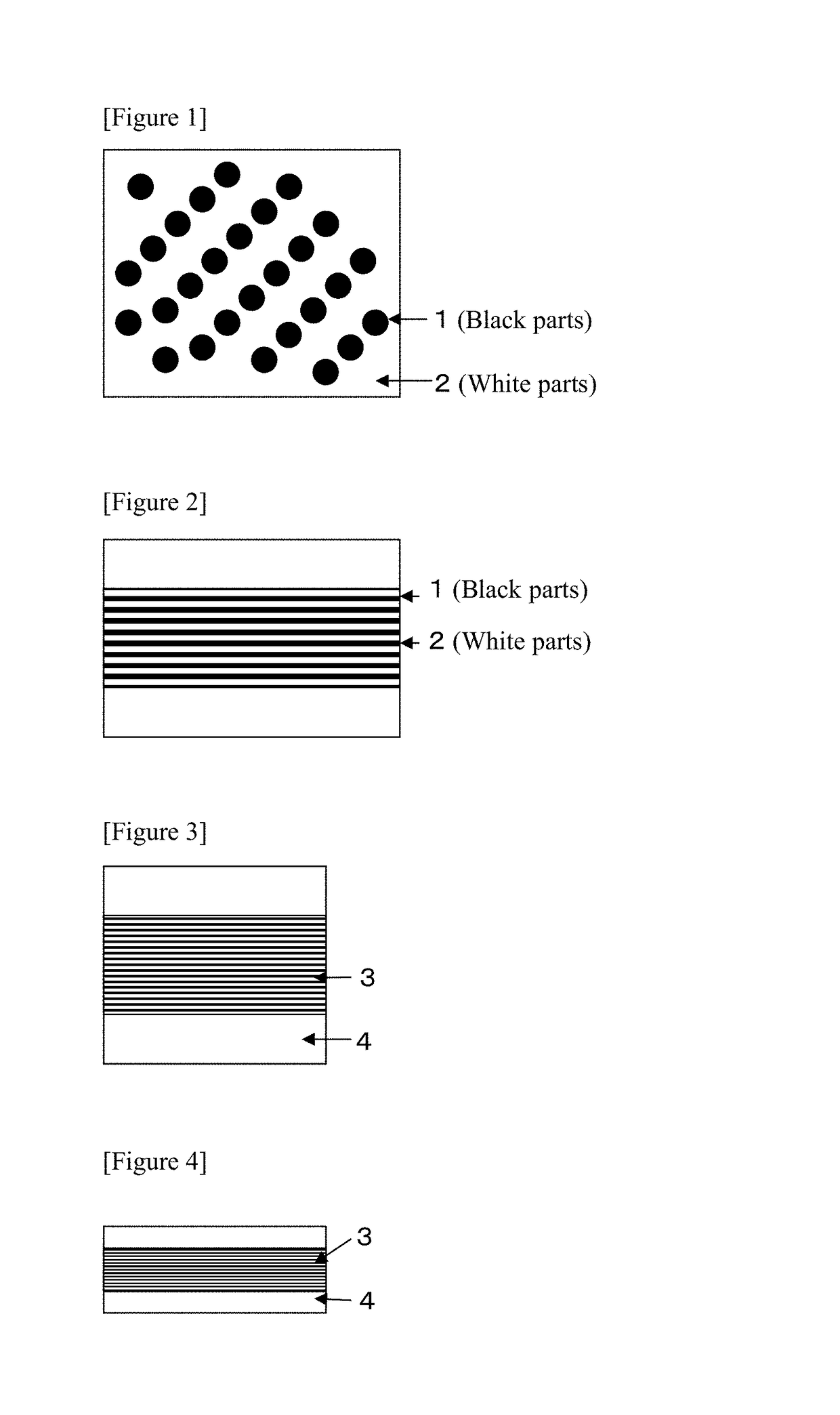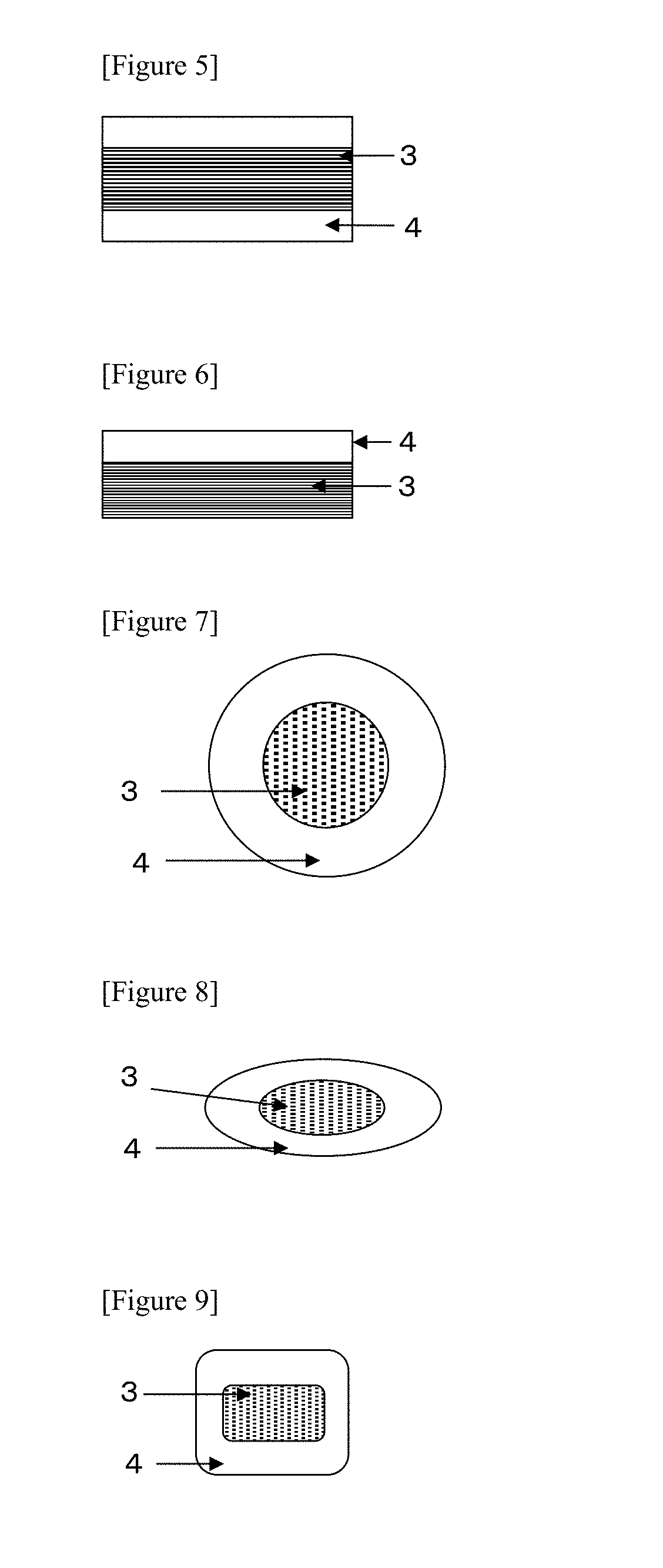Molding material, molding method using same, method for producing molding material, and method for producing fiber-reinforced composite material
a technology of molding material and molding method, which is applied in the direction of coatings, etc., can solve the problems of poor handling ability of molding material and difficulty in sufficiently enhancing the properties of molded articles, and achieve the effects of excellent dynamic properties, easy production, and excellent economic efficiency and productivity
- Summary
- Abstract
- Description
- Claims
- Application Information
AI Technical Summary
Benefits of technology
Problems solved by technology
Method used
Image
Examples
reference example 1
Method for Producing Poly (Phenylene Ether Ether Ketone) Oligomer (B) [B1]
[0431]To a four-necked flask equipped with a stirrer, nitrogen inlet tube, Dean-Stark apparatus, condenser tube, and thermometer, 2.40 g (11 mmol) of 4,4′-difluoro benzophenone, 1.10 g (10 mmol) of hydroquinone, 1.52 g (11 mmol) of anhydrous potassium carbonate, 100 mL of dimethyl sulfoxide, and 10 mL of toluene were loaded. The amount of dimethyl sulfoxide per 1.0 mol of the benzene ring component in the resulting mixture is 3.13 liters. The temperature was raised to 140° C. under nitrogen flow and maintained at 140° C. for 1 hour. The temperature was then raised to 160° C. and maintained at 160° C. for 4 hours to allow the mixture to react. After completion of the reaction, the temperature was cooled to room temperature to prepare a reaction mixture.
[0432]About 0.2 g of the reaction mixture obtained was weighed and diluted with about 4.5 g of THF. THF-insoluble matter was separated and removed by filtration ...
reference example 2
Method for Producing Poly (Phenylene Ether Ether Ketone) Oligomer (B) [B2]
[0439]Here, a method for producing a poly (phenylene ether ether ketone) oligomer (B) will be described, which method uses the linear poly (phenylene ether ether ketone) produced as a by-product in the method for producing a poly (phenylene ether ether ketone) oligomer (B).
[0440]To a 100-mL autoclave equipped with a stirrer, 0.22 g (1 mmol) of 4,4′-difluoro benzophenone, 0.11 g (1 mmol) of hydroquinone, 0.14 g (1 mmol) of anhydrous potassium carbonate, 1.15 g (4 mmol) of the linear poly (phenylene ether ether ketone) obtained by the method described in Reference Example 1 (reduced viscosity; 0.45 dL / g), and 50 mL of N-methyl-2-pyrrolidone were loaded. The amount of N-methyl-2-pyrrolidone per 1.0 mol of the benzene ring component in the resulting mixture is 3.33 liters.
[0441]At room temperature and under normal pressure, the reaction vessel was hermetically sealed under nitrogen gas. Thereafter, with stirring a...
reference example 3
[0445]Here, synthesis in accordance with the common method for producing a poly (phenylene ether ether ketone) described in Examples of JP 2007-506833 A will be described.
[0446]To a four-necked flask equipped with a stirrer, nitrogen inlet tube, Dean-Stark apparatus, condenser tube, and thermometer, 22.5 g (103 mmol) of 4,4′-difluoro benzophenone, 11.0 g (100 mmol) of hydroquinone, and 49 g of diphenyl sulfone were loaded. The amount of diphenyl sulfone per 1.0 mol of the benzene ring component in the resulting mixture is about 0.16 liters. The temperature was raised to 140° C. under nitrogen flow to form a substantially colorless solution. At this temperature, 10.6 g (100 mmol) of anhydrous sodium carbonate and 0.28 g (2 mmol) of anhydrous potassium carbonate were added thereto. The temperature was raised to 200° C. and maintained there for 1 hour, raised to 250° C. and maintained there for 1 hour, and then raised to 315° C. and maintained there for 3 hours.
[0447]The reaction mixtu...
PUM
| Property | Measurement | Unit |
|---|---|---|
| wt % | aaaaa | aaaaa |
| wt % | aaaaa | aaaaa |
| melting point | aaaaa | aaaaa |
Abstract
Description
Claims
Application Information
 Login to View More
Login to View More - R&D
- Intellectual Property
- Life Sciences
- Materials
- Tech Scout
- Unparalleled Data Quality
- Higher Quality Content
- 60% Fewer Hallucinations
Browse by: Latest US Patents, China's latest patents, Technical Efficacy Thesaurus, Application Domain, Technology Topic, Popular Technical Reports.
© 2025 PatSnap. All rights reserved.Legal|Privacy policy|Modern Slavery Act Transparency Statement|Sitemap|About US| Contact US: help@patsnap.com



